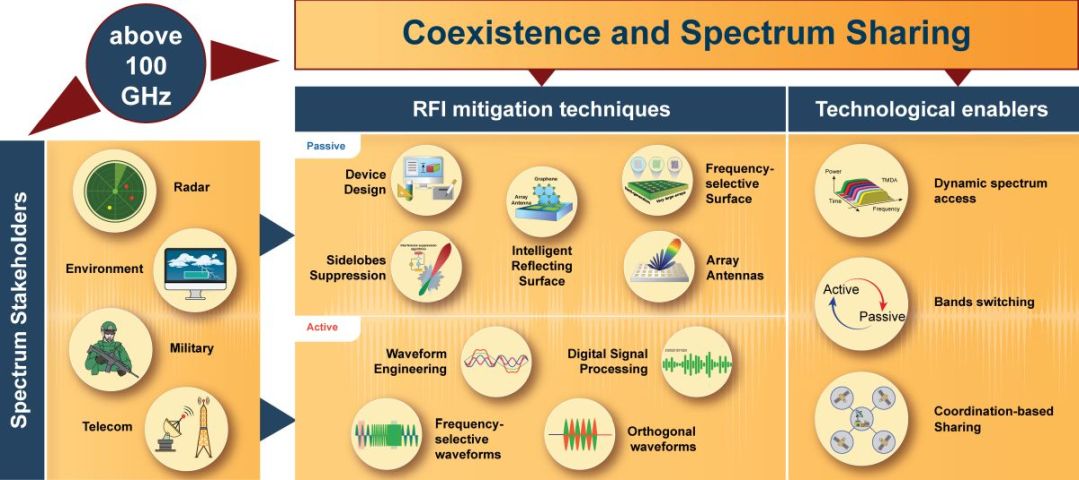Featured Articles November 9, 2023

PUBLISHED IN August 2023
Title
Coexistence and Spectrum Sharing Above 100 GHz
Authors
M. Polese et al.
Abstract
The electromagnetic spectrum plays a fundamental role in the development of the digital society. It enables wireless communications (either between humans or machines) and sensing (for example, for Earth exploration, radio astronomy, imaging, and radars). While each of these uses benefits from a larger bandwidth, the spectrum is a finite resource. This introduces competing interests among the different stakeholders of the spectrum, which have led—so far—to rigid policies and spectrum allocations. Recently, the spectrum crunch in the sub-6-GHz bands has prompted communication technologies to move to higher carrier frequencies, where future sixth-generation (6G) wireless networks can exploit theoretically very large bandwidths. However, the spectrum above 100 GHz features several narrow, yet numerous subbands that are exclusively allocated for passive sensing applications, e.g., for climate and weather monitoring. This prevents the allocation of large contiguous bands to active users of the spectrum, either being communications (which need tens of gigahertz of bandwidth to target terabit-per-second links) or radars. This article explores how spectrum policy and spectrum technologies can evolve to enable sharing among different stakeholders in the above 100-GHz spectrum, without introducing harmful interference or disrupting either security applications or fundamental science exploration. This portion of the spectrum presents new challenges and opportunities for the design of spectrum sharing schemes, including higher spreading and absorption losses, extremely directional antenna technologies, and ultrahigh data-rate communications, among others. This article provides a tutorial on current regulations above 100 GHz and highlights how sharing is central to allowing each stakeholder to make the most out of this spectrum. It then defines—through detailed simulations based on standard International Telecommunications Union (ITU) channel and antenna models—scenarios in which active users may introduce harmful interference to passive sensing. Based on this evaluation, it reviews a number of promising techniques that can enable active/passive sharing above 100 GHz. The critical review and tutorial on policy and technologies of this article have the potential to kickstart future research and regulations that promote safe coexistence between active and passive users above 100 GHz, further benefiting the development of digital technologies and scientific exploration.